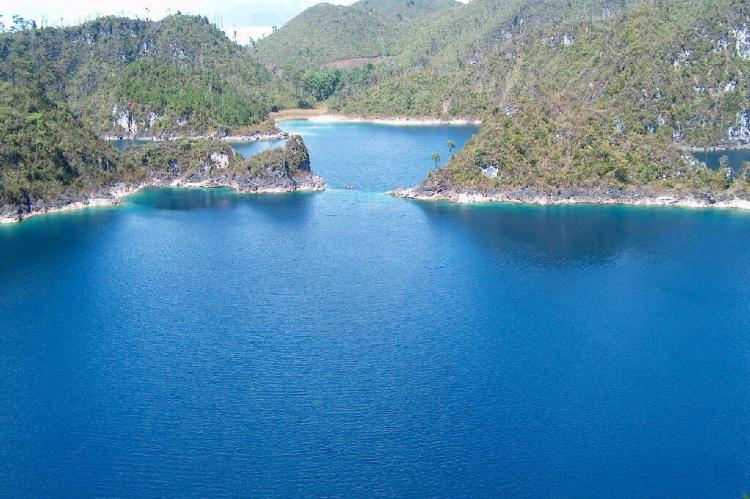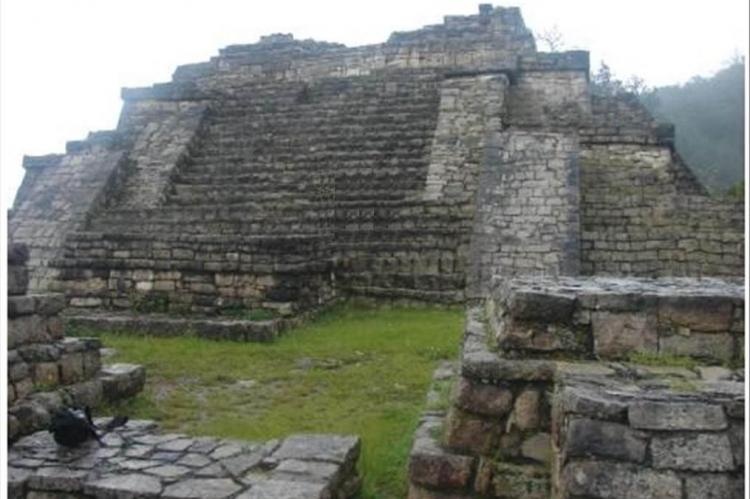Lagunas de Montebello National Park and Biosphere Reserve (Mexico)
The Lagunas de Montebello National Park and Biosphere Reserve are located in the Sierra Madre de Chiapas physiographic province of Mexico, near the border with Guatemala. The protected area comprises a myriad of multi-colored lakes in a pine forest, along with the Maya ruins of Chinkultic.
Lagunas de Montebello National Park
Lagunas de Montebello National Park is located in the southeast region of Chiapas State, Mexico, in the Sierra Madre de Chiapas region, near the border with Guatemala.
Comprising 59 multi-colored lakes in a pine forest, along with two Maya ruins, it was the first National Park in Chiapas when created in 1959. In 2009, the Lagunas de Montebello National Park was designated a Biosphere Reserve by UNESCO.
The main attractions of the Lagunas de Montebello property are its 59 lakes, collectively called the Montebello Lakes. The lakes are famous for their striking colors, which vary due to their different mineral contents, ranging from emerald and turquoise to dark green, and even purple and reddish black.
About 15 of the lakes are easily accessible by car or foot. There are also cenotes and a group of limestone caves called Grutas San Rafael del Arco in the park that can be visited on foot or horseback.
The summers are very rainy. The average annual precipitation is 1,862 mm (73 in) per year. The principal ecosystems represented in the park are coniferous forest, cloud forest, and aquatic and sub-aquatic vegetation. Lagunas de Montebello forms part of a high-priority conservation and hydrological basin.
Maya Ruins of Chinkultic
Also within the park boundary are the Maya ruins of Chinkultic, a pre-Columbian city that dates back to the third century and was abandoned in the 13th century.
The archaeological site is not thoroughly excavated, and many buildings are still hidden under vegetation. However, there are nearly 200 buildings, including several pyramids and a unique asymmetrical ball court, whose hieroglyphic inscriptions indicate it was dedicated in May 591.
Lagunas de Montebello Biosphere Reserve
Lagunas de Montebello Biosphere Reserve covers an area of 6,425 ha (15,876 acres), of which 3,412 ha (8,430 acres) are considered the core area.
It is located on the high plains of the Sierra Madre de Chiapas, with an altitude between 1,500 and 1,800 m (4,900 and 5,900 ft) above sea level.
Lagunas de Montebello is located between the physiographic region of the Chiapas Plain and the Gulf Coastal Plain, part of the physiographic province of Sierras de Chiapas and Guatemala.
This region corresponds to the floristic areas of Miranda, called the central massif, and the plains and slopes north of the central massif. Its physiography includes from small drains to great trenches. There are also big caves and cavities of varied shapes and dimensions.
Flora and Fauna
As a critical terrestrial priority region, the Reserve represents an important biological Mesoamerican corridor and habitat to several migratory and resident species, including at least 277 species of birds, 65 species of mammals, and 35 reptiles.
Vegetation is represented mainly by 208 species of trees, 50 species of orchids, and an essential number of epiphytic and ferns. One hundred six species are recognized as endangered, and 27 as endemic.
Socio-Economic
Surrounding Lagunas de Montebello, numerous communities maintain some ancestral traditions. However, the Chujs are the main ethnic group in the region.
The main directions in conservation activities on the property include:
- Protection of the terrestrial and wetland ecosystem diversity and restoration of disturbed zones
- Protection and recovery of vulnerable, endangered, or at-risk flora or fauna species
- Drive strategies for sustainable management and viable handling of the ecosystems
- Promotion of scientific research and the generation of new biological and ecological knowledge
- Promotion of culture for conservation utilizing ecological education and information based on environmental paths - develop sustainable tourism as an opportunity to proportionate ecological education





